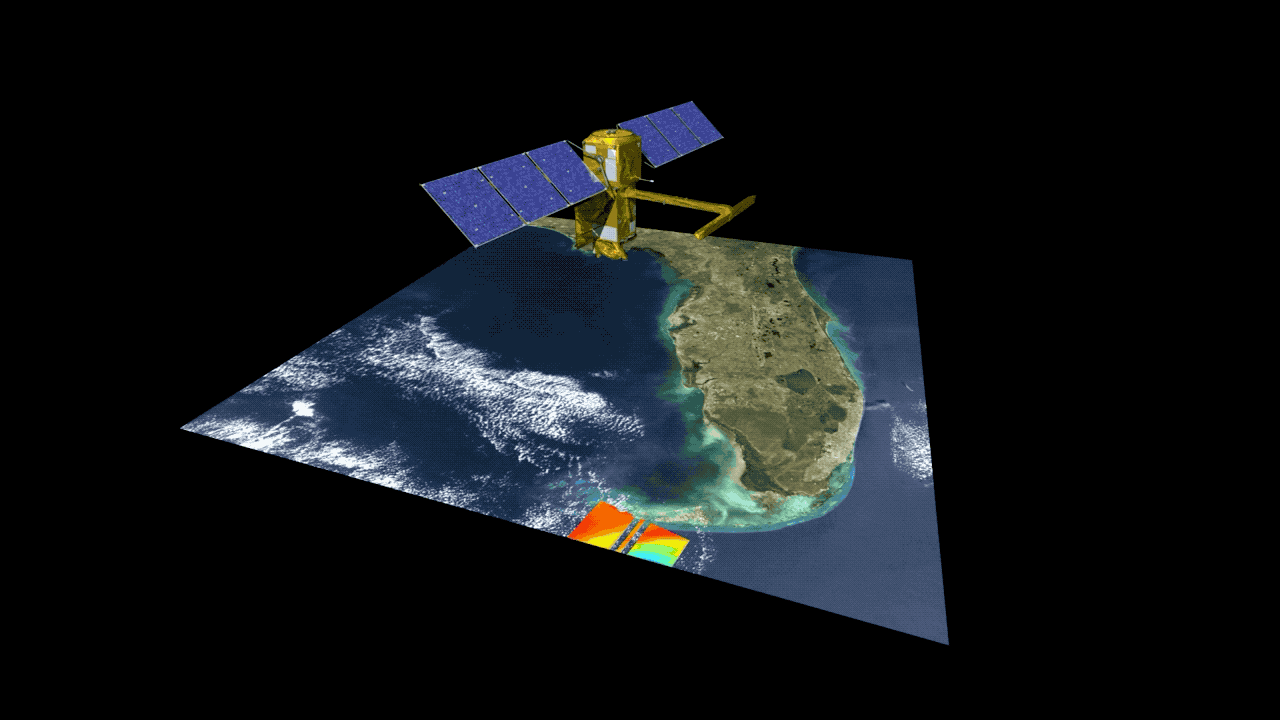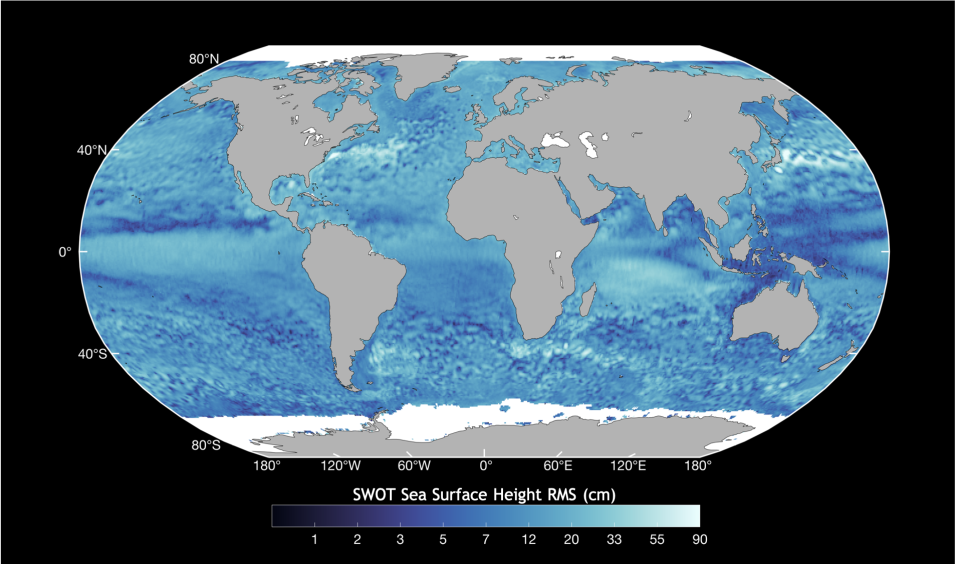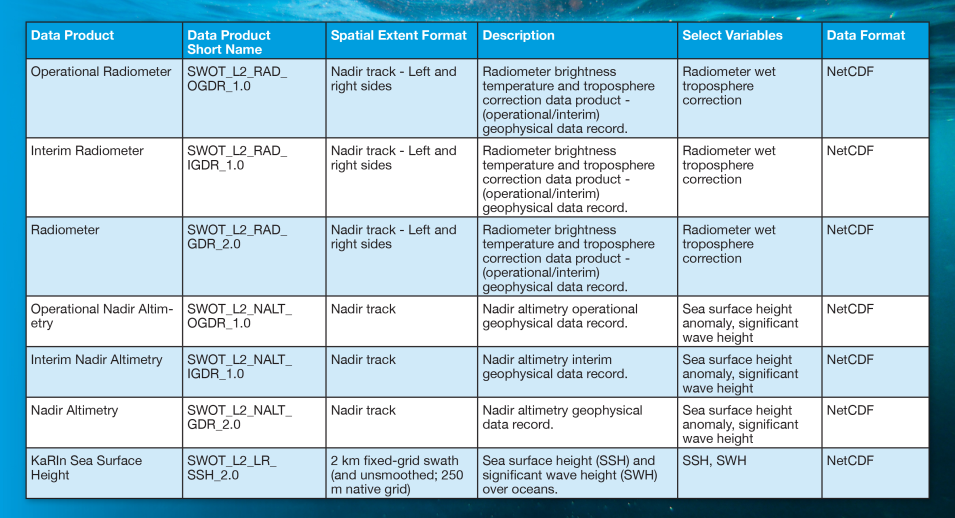On December 16, 2022, the Surface Water and Ocean Topography (SWOT) satellite flew into space aboard a SpaceX Falcon 9 rocket from California's Vandenberg Air Force Base. Jointly developed by NASA and CNES (Centre National D'Études Spatiales), with contributions from CSA (Canadian Space Agency) and the United Kingdom Space Agency (UKSA), SWOT's mission is to monitor Earth’s surface water with unprecedented detail and accuracy, capturing the first global survey of the planet's surface water.
In March 2024, the SWOT mission team released a suite of pre-validated Level 1 and Level 2 hydrology and oceanography datasets offering terrestrial water surface elevation, slope, width, area, sea surface height, significant wave height and wind speed measurements, and more. Information about these new datasets will follow a brief overview of the SWOT mission, how these data are acquired, and data applications.
SWOT Overview
The SWOT mission will provide critical information that can support assessment of water resources on land, track regional sea level changes, monitor coastal processes, and observe small-scale ocean currents and eddies.
In brief, SWOT data will allow hydrologists and oceanographers to:
- Estimate river flow as well as lake and reservoir volume changes around the globe, track how much water is flowing through hundreds of thousands of river reaches wider than 330 feet (100 meters), and keep a close watch on the levels of more than a million lakes larger than 15 acres (6 hectares)
- Create detailed maps of rivers, lakes, and reservoirs that will enable accurate monitoring to provide a view of freshwater resources, even in remote locations
- Provide derived volumetric measurements of rivers, lakes, and reservoirs to help hydrologists better track droughts and floods
- View the ocean with unprecedented clarity, allowing scientists to detect features such as fronts, eddies, and waves as small as a few kilometers, and—for the first time—provide information that will improve physics models and forecasts
- Better understand the role the ocean plays in climate change by inferring how much heat and carbon the ocean absorbs from the atmosphere
- Monitor sea level, tides, and coastal sea level variations all the way into estuaries for the first time, at a resolution that will contribute to the understanding of local coastal changes




